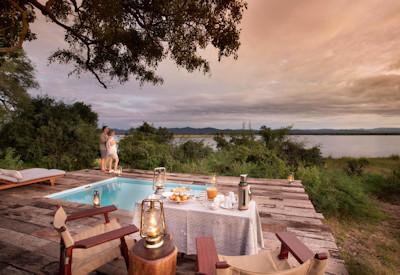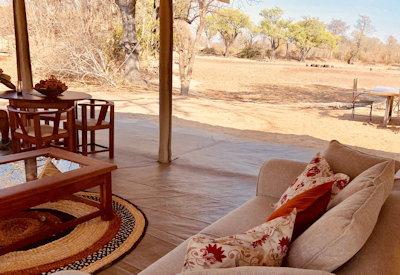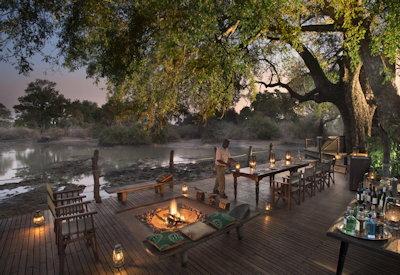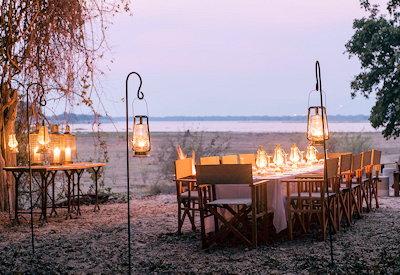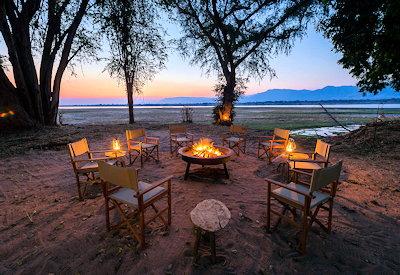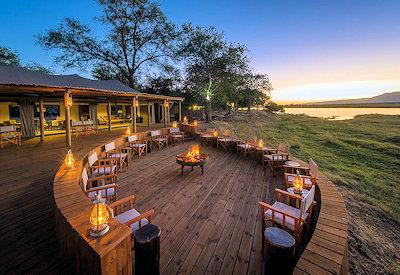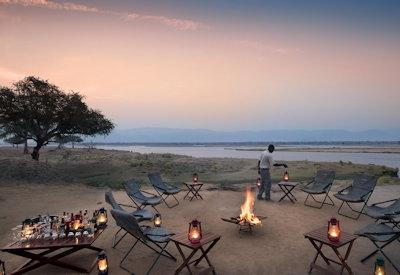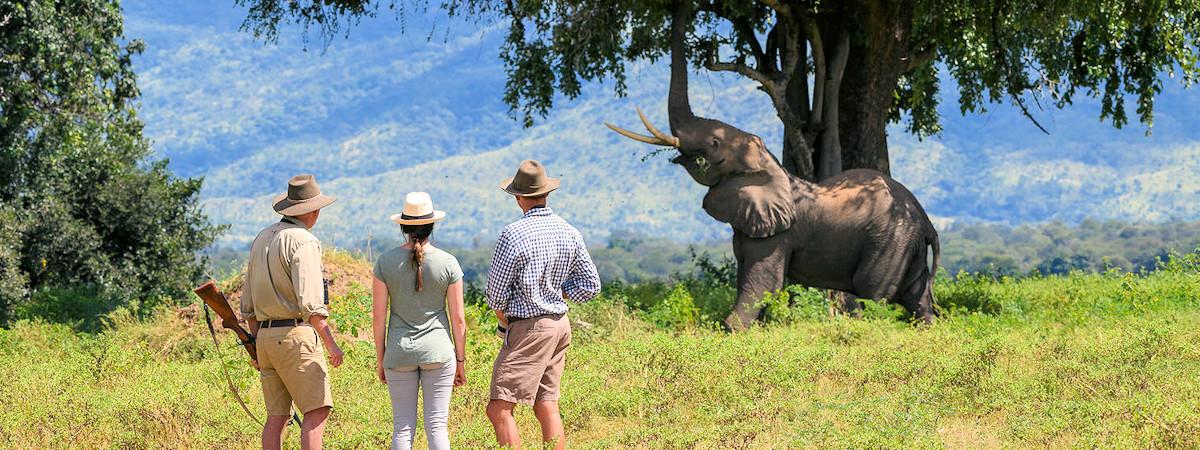
Top 10 Reasons to Visit Mana Pools National Park in 2024
Searching for 10 reasons to visit Mana Pools National Park? In 2024, this UNESCO World Heritage Site offers incredible wildlife, breathtaking scenery, and unforgettable experiences. Here are 10 reasons to visit Mana Pools National Park that should be on your travel list.
Mana Pools National Park is a haven for wildlife enthusiasts, where you can witness a rich array of species including elephants, lions, and over 450 bird species. The park's diverse ecosystems provide a unique opportunity to see animals in their natural habitats, making it a paradise for photographers and nature lovers alike. Whether you're exploring the floodplains or the woodlands, every moment in Mana Pools is filled with the thrill of wildlife encounters.
In addition to its abundant wildlife, Mana Pools offers a variety of unique experiences that set it apart from other safari destinations. Imagine embarking on a walking safari, where you can get within meters of wild animals like elephants and lions, or paddling down the iconic Zambezi River, encountering hippos and crocodiles along the way. These adventures provide an intimate connection with nature that you won't find anywhere else.
The park's pristine wilderness and scenic beauty are further enhanced by its remote and wild setting. Mana Pools is celebrated for its stunning landscapes, from the flowing Zambezi River to the dense woodlands. This untouched beauty offers a sense of peace and tranquillity that is hard to find in today's fast-paced world. Visiting Mana Pools is like stepping into a different world, where you can truly escape and immerse yourself in the wonders of nature.
Key Takeaways
- Mana Pools is a haven for wildlife enthusiasts, showcasing a rich array of species, including elephants, lions, and over 450 bird species.
- Unique experiences like walking safaris and canoeing on the Zambezi River allow for close encounters with wildlife in a stunning natural setting.
- Chitake Springs is a prime location for wildlife viewing, especially during the dry season when many animals gather around this vital water source.
Abundant Wildlife Encounters
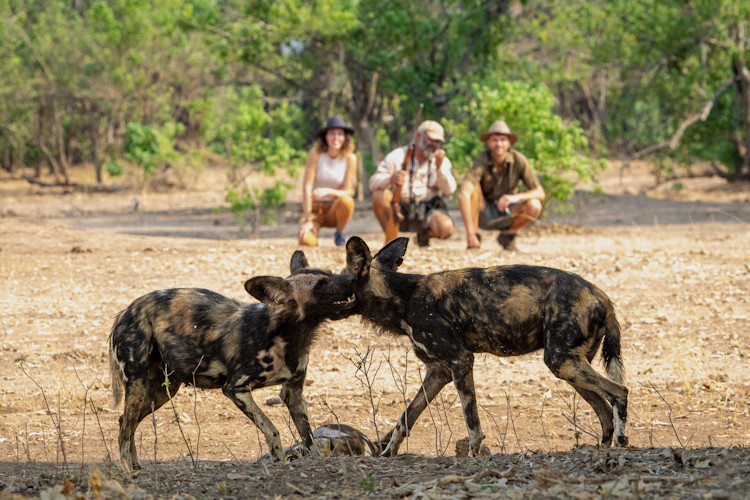
Mana Pools is celebrated for its rich wildlife, including elephants, lions, leopards, wild dogs, and various antelope species. The park's landscape offers a unique opportunity to see animals like zebras and buffalo along the Zambezi River. Imagine the thrill of spotting a lion stalking its prey or watching a herd of elephants majestically crossing the river. The abundance of wildlife here means there's never a dull moment, making it a paradise for wildlife photographers and nature enthusiasts alike.
One of the most fascinating behaviors observed in Mana Pools is the clever feeding strategy of elephants. These gentle giants often wait for baboons to dislodge ripe fruits before gathering them from the ground. This interaction between species showcases the intricate balance of nature in the park. Additionally, the area around Chitake Springs is known for its dramatic predator-prey dynamics, offering excellent opportunities for wildlife photography.
For those seeking a closer encounter, guided walking safaris provide the perfect opportunity. These Zimbabwe safaris allow visitors to get within meters of wild animals like elephants, lions, and wild dogs. Regularly observed species during walking safaris include buffalo, impala, waterbuck, and zebra. With experienced guides leading the way, you'll safely explore the park's diverse ecosystems and witness its abundant wildlife up close.
Walking Safaris for Close Encounters
Walking safaris in Mana Pools offer an intimate exploration of the park's ecosystems and close animal observation. Unlike traditional game drives, walking safaris immerse you in the environment, allowing you to experience the sights, sounds, and even the scents of the African bush. Mana Pools' remote and wild environment is ideal for an adventurous safari experience, providing a sense of solitude and connection with nature.
Experienced guides play a crucial role in these safaris, bringing guests within meters of various animal species safely. Imagine standing just a few feet away from a majestic elephant or observing a pride of lions in their natural habitat. Walking safaris at places like Chitake Springs offer authentic wilderness experiences and opportunities to see wildlife up close. This proximity enhances the thrill and makes for unforgettable encounters.
To complement your walking safari, consider a guided canoe trip on the iconic Zambezi River. These trips allow for immersive experiences in the wilderness, with the added excitement of camping on islands. The combination of walking and canoeing provides a comprehensive way to explore Mana Pools, ensuring you don't miss any of the spectacular sights this pristine wilderness has to offer.
Canoeing on the Iconic Zambezi River
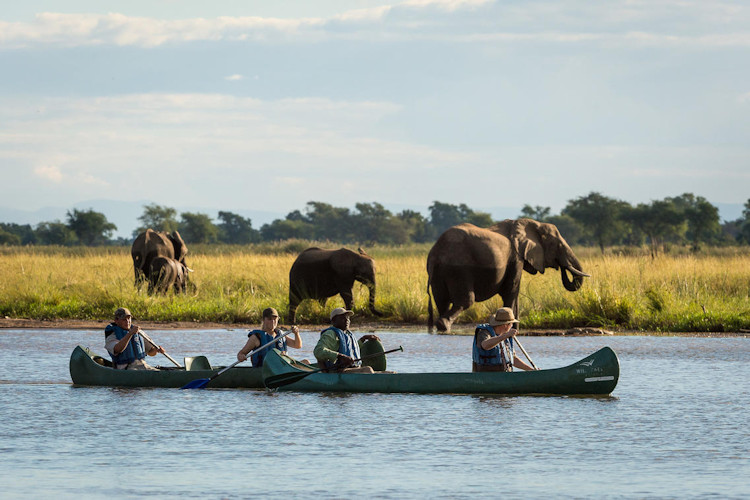
Canoeing on the Zambezi River is an adventure like no other. As you paddle along the mighty river, you'll encounter hippos and crocodiles, providing an exciting view of these animals in their natural habitat. The thrill of seeing these creatures up close, combined with the serene beauty of the river, makes for an unforgettable experience.
The Zambezi River offers intimate wildlife experiences, including sightings of hippos and elephants. Paddling quietly along the riverbanks, you may find yourself just a few meters away from a grazing elephant or a pod of hippos lounging in the water. This unique perspective allows you to observe the animals' behaviours without disturbing their natural routines, making it a perfect opportunity for wildlife photography.
Canoeing on the Zambezi River provides a thrilling way to explore the region. The river's scenic beauty, framed by the African sky and the surrounding wilderness, creates a picturesque setting for your adventure. Whether you're navigating the gentle currents or camping on river islands, the experience is both exhilarating and serene, offering a perfect blend of excitement and tranquillity.
Bird Species Diversity
Mana Pools is home to over 450 bird species, making it a birdwatcher's paradise. The park's diverse habitats, from riverbanks to woodlands, create ideal conditions for a variety of avian life. Notable bird species include the migratory Southern Carmine Bee-eaters, which nest along the riverbanks. Their vibrant colours and dynamic behaviour add a splash of beauty to the landscape.
Among the colourful bird species that thrive in Mana Pools are the vibrant Lillian Lovebirds. These birds, along with many others, create a symphony of sounds that enhance the serene experience of the park. Visitors can expect a vibrant experience with a variety of avian life complementing the mammal sightings. The mornings in Mana Pools resonate with a chorus of birdsong, adding to the immersive experience of the park.
Birdwatching in Mana Pools is not just about ticking off species from a list; it's about experiencing the park's ecosystem in its full glory. The diverse avian life, from the tiny sunbirds to the majestic fish eagles, enriches every moment spent in this pristine wilderness. Whether you're an avid birder or a casual observer, the bird species diversity in Mana Pools is sure to captivate your interest.
Game Drives with Spectacular Sights
Guided evening game drives in Mana Pools National Park provide unique opportunities to witness wildlife in their natural habitats under the African sky. These drives are perfect for those who prefer a more relaxed way of exploring the park, lasting for about an hour. As the sun sets and the temperature cools, the park comes alive with activity. Tracking big cats like leopards is a popular highlight during these evening drives, offering a chance to see these elusive predators in action.
The spectacular sights during game drives are not limited to big cats. The diverse terrain of Mana Pools, from floodplains to woodlands, provides a picturesque backdrop for your safari. Whether you're spotting a herd of buffalo grazing or watching a family of elephants crossing the river, each moment is filled with awe-inspiring sights that make for incredible wildlife photography.
Unique Elephant Behaviors
One of the most remarkable sights in Mana Pools is the unique behaviour of its elephants. In this park, some elephants have adapted to standing on their hind legs to access high branches, showcasing a remarkable behaviour unique to this park. This technique involves hoisting their weight to reach foliage that is otherwise unattainable due to the depletion of low-lying vegetation. Observing these elephants perform this gravity-defying act can be a breathtaking experience for visitors.
A specific elephant known as Boswell is particularly famous for his acrobatic feeding behaviours, including standing on his hind legs to reach high branches. This unique adaptation not only highlights the intelligence and adaptability of elephants but also provides a rare and captivating sight for visitors. The sight of Boswell reaching for the highest branches is a testament to the ingenuity of these magnificent animals.
These unique behaviours are a highlight of any visit to Mana Pools, offering a glimpse into the extraordinary lives of its wildlife. The chance to witness elephants displaying such remarkable adaptability adds an extra layer of wonder to your safari experience.
Whether you're on a guided walking safari or observing from a distance, the unique elephant behaviours in Mana Pools are sure to leave you in awe.
Fishing Adventures
Fishing in the Zambezi River is an adventure that promises both excitement and relaxation. Early mornings and afternoons are the prime times for fishing, offering the best chances to catch a variety of species. Anglers can look forward to catching tiger fish, tilapia bream, and catfish in the river. The thrill of reeling in a tiger fish, known for its fierce fight, adds an element of excitement to the experience.
In addition to tiger fish, anglers can catch various types of bream, including Yellow-belly Bream, which can weigh over 6 kg and is popular among fishermen. The best fishing for Tiger Fish and Nembwe typically occurs from late May to December, coinciding with seasonal changes in water levels.
Whether you're an experienced angler or a novice, the fishing adventures in Mana Pools offer a rewarding and enjoyable experience.
Pristine Wilderness and Scenic Beauty
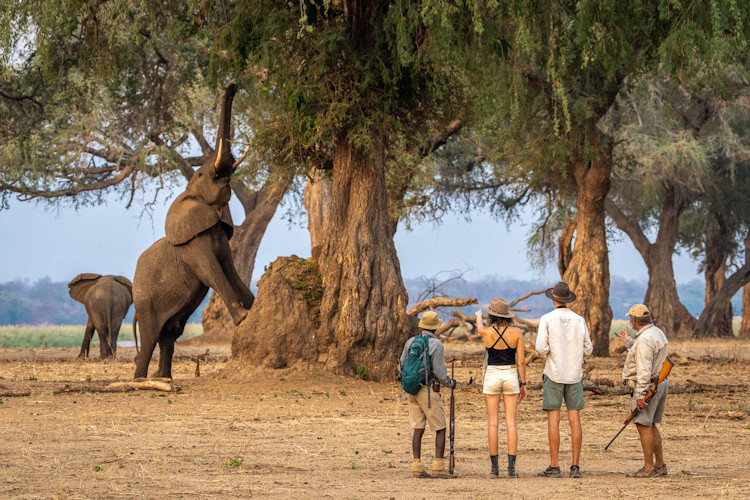
Mana Pools National Park is celebrated as one of the most breathtaking safari locations worldwide. The park is described as supremely remote and wild, offering visitors a true escape into nature. Its landscape features a combination of river banks, floodplains, and woodlands, creating stunning vistas that captivate the senses. The rugged and remote setting of Chitake Springs enhances the wilderness experience for safari-goers, making it a unique destination among national parks.
The scenic beauty of Mana Pools is further enhanced by its status as a UNESCO World Heritage Site. This designation underscores the park's significance and the need to preserve its pristine wilderness. The diverse terrain, from the flowing Zambezi River to the dense woodlands, offers a variety of landscapes that are both picturesque and teeming with life. Every corner of the park holds a new discovery, making it a photographer's dream.
Visiting Mana Pools is like stepping into a different world, where the hustle and bustle of everyday life fades away, and you're left with the pure, unspoiled beauty of nature. The national park mana pools' remote location and untouched landscapes provide a sense of peace and tranquillity that is hard to find elsewhere. Whether you're exploring the riverbanks or the woodlands, to visit mana pools will leave a lasting impression.
Chitake Springs Wildlife Viewing
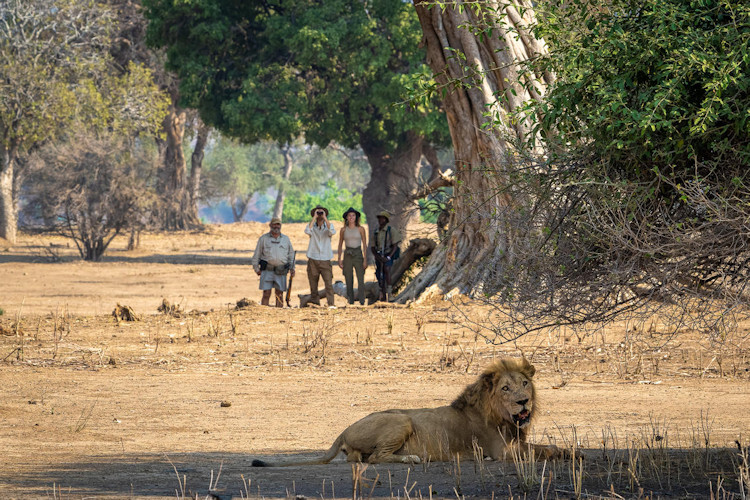
Chitake Springs is a crucial water source for wildlife in Mana Pools National Park, particularly during the dry season when animals like elephants, lions, and buffalo frequently visit. The springs attract large concentrations of wildlife, drawn to the vital water source. This makes Chitake Springs one of the best spots for wildlife viewing in the park.
The best time to visit Chitake Springs is during the dry season when large concentrations of wildlife are attracted to the springs for drinking water. Observing the interactions between different species as they gather around the water source provides a fascinating glimpse into the park's ecosystem.
Whether you're on a guided walking safari or simply observing from a distance, Chitake Springs offers spectacular sights and unforgettable wildlife encounters.
Historical and Cultural Significance
The name 'Mana' derives from the Shona word for four, referring to the four pools formed by the Zambezi River. These pools are not only a defining feature of the park's landscape but also hold historical significance. The Zambezi River, a crucial trade route historically, plays a significant role in the cultural landscape surrounding Mana Pools. Since the park's opening in 1963, wildlife has adapted to the presence of humans on foot.
Conservation efforts in Mana Pools have been supported by the Zambezi Society since 1982, focusing on protecting the area from threats like poaching. These efforts have been crucial in maintaining the park's pristine wilderness and rich biodiversity.
Understanding the historical and cultural significance of Mana Pools adds depth to your visit, providing context to the stunning landscapes and abundant wildlife you encounter.
Summary
In conclusion, Mana Pools National Park offers an unparalleled experience for wildlife enthusiasts, adventure seekers, and nature lovers. From the abundant wildlife encounters and unique elephant behaviours to the serene beauty of the Zambezi River and the diverse bird species, every moment in Mana Pools is filled with wonder and excitement. The park's pristine wilderness and scenic beauty provide a perfect backdrop for unforgettable adventures, whether you're on a walking safari, canoeing on the river, or fishing in its waters.
As you plan your visit to Mana Pools in 2024, remember that this park is more than just a destination; it's a journey into the heart of nature. With its rich history, cultural significance, and dedicated conservation efforts, Mana Pools is a testament to the beauty and resilience of the natural world. So pack your bags, grab your camera, and get ready for an adventure of a lifetime in Mana Pools National Park.
Frequently Asked Questions
What is the best time to visit Mana Pools National Park?
The best time to visit Mana Pools National Park is during the dry season from May to October, when wildlife gathers around water sources, and the weather is perfect for safaris. You'll have a fantastic experience spotting animals during this period!
What wildlife can I expect to see in Mana Pools?
In Mana Pools, you can expect to see an incredible variety of wildlife, including elephants, lions, leopards, wild dogs, buffalo, zebras, and many birds. It's a fantastic spot for animal lovers and birdwatchers alike!
Are walking safaris safe in Mana Pools?
Absolutely, walking safaris in Mana Pools can be safe if you're with experienced guides who know the wildlife and terrain well. They make sure your adventure is exciting yet secure.
What makes canoeing on the Zambezi River special?
Canoeing on the Zambezi River is unique because it lets you experience the park's wildlife intimately, giving you close encounters with hippos, crocodiles, and elephants amid stunning scenery. It's a serene yet thrilling way to immerse yourself in nature.
How can I contribute to conservation efforts in Mana Pools?
You can make a real difference in Mana Pools by sticking to park guidelines and getting involved in eco-friendly activities. Consider supporting organizations like the Zambezi Society to help protect the park from threats like poaching.
Tembo Plains Camp
Tembo Plains Camp is a sublime gateway to the captivating landscapes of Mana Pools National Park, Zimbabwe. Here, the harmony of luxury and nature creates an unparalleled retreat for discerning travellers.
The experience at Tembo Plains is enhanced by a passionate team committed to exceptional service and a strong connection to the wilderness. From arrival, the enchanting sights and sounds of the African bush draw you into an extraordinary adventure, offering an unforgettable safari filled with exploration and wonder.
Ingwe Pan Camp
Ingwe Pan Camp enjoys an absolutely unparalleled location, offering a unique blend of convenience and seclusion. A mere 30-minute exhilarating game drive away from both the iconic Zambezi River, with its incredible hippo and crocodile populations, and the legendary Mana floodplain, renowned for its large elephant herds.
This gem of a camp is situated on the edge of the Ingwe Pan, surrounded by untouched bushveld. It is teeming with wildlife, including frequent sightings of painted dogs and lions, all within the magnificent Mana Pools National Park.
Kanga Camp
Kanga Camp is, without a doubt, one of the most exclusive safari experiences in Mana Pools National Park. Nestled in an untouched wilderness paradise, this seasonal camp overlooks the serene beauty of Kanga Pan, offering guests an authentic and intimate connection with nature that is truly exceptional.
The camp prides itself on creating a small, personal experience, with every detail designed to immerse guests in the wild. Game drives and walking safaris provide unparalleled opportunities to explore the stunning landscape and encounter the diverse wildlife that calls this pristine area home.
Chikwenya Camp
Chikwenya Camp boasts an absolutely prime and truly breathtaking location, nestled perfectly at the magnificent confluence of the Sapi River and the iconic Zambezi. This unparalleled positioning places it directly on the eastern border of the world-renowned Mana Pools National Park, a cherished World Heritage site.
Adding to its exceptional allure, Chikwenya Camp commands an utterly exclusive 7000-acre lease, featuring a pristine expanse of the lower Zambezi floodplain and an impressive 5km of dedicated, unparalleled river frontage – ensuring a uniquely private and magnificent wilderness experience for all who visit.
Little Ruckomechi Camp
Nestled on the majestic banks of the iconic Zambezi River, deep within the world-renowned Mana Pools, lies Little Ruckomechi Camp. This unparalleled location is a vibrant sanctuary, teeming with an astonishing abundance of wildlife and an incredible diversity of birdlife.
Little Ruckomechi Camp stands as the supreme choice for discerning travelers seeking the absolute pinnacle of luxury and an exceptional sense of privacy during their unforgettable Mana Pools National Park experience.
Sapi Explorers Camp
Sapi Explorers Camp is, without a doubt, spectacularly positioned within the magnificent 1180-square-kilometre private Sapi Concession. This exceptional wilderness, bordering Zimbabwe's world-renowned Mana Pools National Park, is one of the most remote and captivating safari destinations in Africa today.
The sense of adventure is heightened by the sheer variety of wildlife, making every moment feel like a once-in-a-lifetime encounter. With its unparalleled setting and the thrill of exploration, this destination promises an experience that redefines what it means to connect with nature.
Ruckomechi Camp
Ruckomechi Camp sits on the western edge of Mana Pools National Park, nestled in an ancient grove of Acacia and Mahogany trees. It offers exceptional views of the Zambezi River, perfectly framing the spectacular mountains of Africa's Great Rift Valley Escarpment.
Nestled in a grove of Acacia and Mahogany trees, Ruckomechi Camp offers breathtaking panoramic views over the Zambezi River. Located on the western edge of Mana Pools National Park, the camp looks out towards the dramatic mountains of Africa's Great Rift Valley Escarpment.
Zambezi Expeditions Camp
Zambezi Expeditions Camp is a fantastic option for exploring the magnificent Mana Pools. This semi-mobile camp is designed for those who want to escape the modern world and fully immerse themselves in the wild heart of the famed national park.
Its unique, adaptable setup fosters an intimate wilderness connection. Guests can disconnect from digital distractions, embracing nature's rhythm. Every moment offers raw, unfiltered engagement with an iconic African national park.

